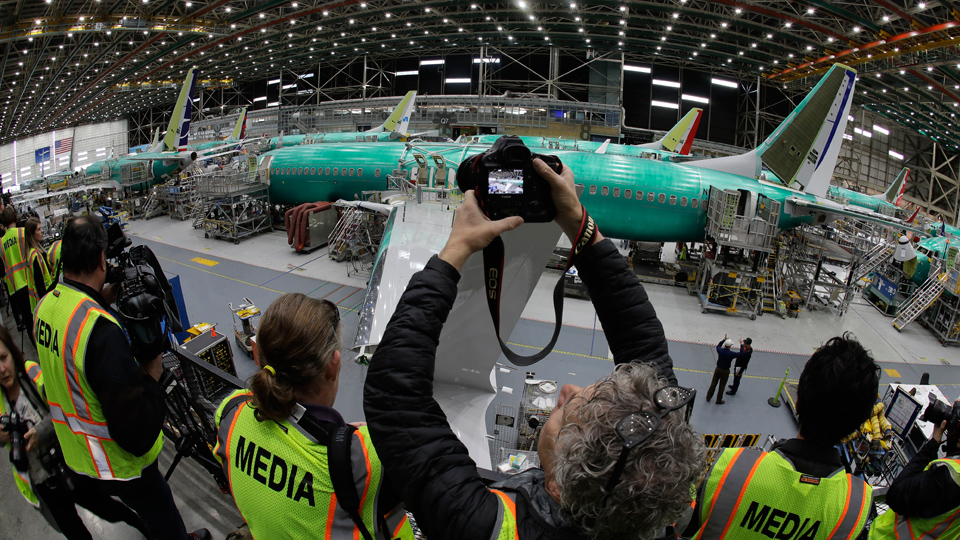
SEATTLE—Criminal negligence driven by corporate profit greed cost 346 passengers their lives in the crash of two Boeing 737 MAX jetliners flown by Ethiopian and Indonesian airlines in the past year.
A faulty electronic steering mechanism, the Maneuvering Characteristics Augmentation System (MCAS), forced the nose of the airliners sharply down so that the planes went into a nose dive despite a struggle by the pilots and co-pilots to avert the disasters. At first, Boeing tried to shift blame to the pilots for the catastrophe. But investigators proved that the pilots followed Boeing instructions to the letter, even attempting to disable the MCAS so they could manually fly the planes.
All the Boeing 737 MAX airliners have been grounded worldwide, and the company is facing lawsuits that will cost more than a billion dollars.
The Seattle Times, in an exposé on May 5, revealed the connivance of Boeing management and President Donald Trump’s Federal Aviation Administration (FAA) in a scheme to undermine the independence of engineers charged with inspecting the airliners during assembly.
The measures include speedup and cutbacks in the inspection of the Boeing 737 MAX to reduce costs and meet production schedules. The Times interviewed more than a dozen current and former Boeing engineers, called “ARs” or “Authorized Representatives,” employed by Boeing but until the recent crisis accountable and reporting directly to FAA. All the ARs confirmed that since 2004, when FAA terminated its direct meetings with the ARs, corporate managers exerted extreme pressure on them to cut back their inspections, even threatening to fire or re-assign them.
One senior AR said he refused to buckle to Boeing when he reported inadequate testing of the fire suppression system on the Boeing 737 MAX.
His complaints, joined by three other former Boeing inspectors, is contained in a lawsuit against the corporate giant filed by three unions that represent FAA employees. The Boeing engineer assembled his fellow inspectors, all of whom agreed that more testing was needed. A Boeing manager ordered him to go back and re-inspect the planes and return with results that enabled the company to “meet its costs and production schedule.”
But the engineer came back with the same conclusions. Finally, an outside inspector confirmed the findings. Boeing was forced to fix the problem. Yet the AR whistleblower was re-assigned to another department.
Key to the problem, according to the Times, is the termination of the independence of the ARs. Until 2004, the ARs were on the Boeing payroll but reported directly to the FAA. Now, the ARs report to Boeing supervisors, and never report at all to the FAA.
This privatization of safety inspections is a classic case of Boeing assigning the fox to guard the henhouse. The AR who spotted the dangerous fire suppression system on the Boeing 737 MAX said the inspection system is “absolutely broken.”
John Goglia, a former member of the National Transportation Safety Board (NTSB) charged that terminating direct liaison between the ARs and the FAA “negates the whole system. The FAA should have come down on that really hard.”
Boeing is charging ahead with their plans to wreck FAA inspections by reducing the numbers of inspectors by 900 engineers.
The International Association of Machinists Local 751 that represents Boeing workers denounced the cutbacks at town hall meetings at their union halls in Auburn, Renton, and Everett. IAM Local 751 President Jon Holden blasted Boeing’s so-called “Verification Optimization” plan to cut thousands of inspections.
“We firmly believe that removing inspections is a bad decision that will in no way improve the manufacturing process,” he said. “Defects will be simply be pushed down the line and when discovered they result in rework that is more costly and cumbersome to perform, and potentially causing more injuries for members.”
And observers ask, what if the defects are not detected and the planes are “self checked,” to use Boeing’s phrase, and approved for flight?
Holden also told the crowd the IAM is “pushing to get a meeting with the FAA to present all the examples and information” from Boeing flight line workers about faults in the production of planes. IAM, he said, won a struggle to block Boeing plans to lay off the 900 ARs.
Boeing’s war on their employees—and the flying public—surfaced in other ways, too. The New York Times reported recently that Boeing’s non-union plant in South Carolina is rife with “shoddy work” and “weak oversight.” IAM has struggled to address the problems with a strong drive to unionize the plant. Boeing fired three of the workers, clearly retribution for the workers’ support of the union, a finding upheld by the National Labor Relations Board.












Comments